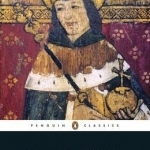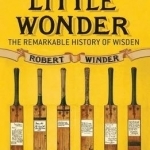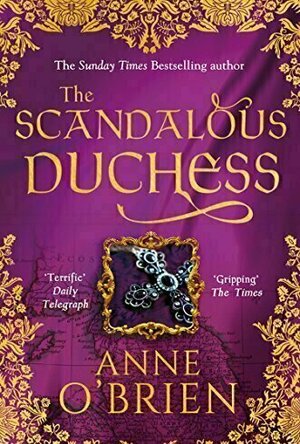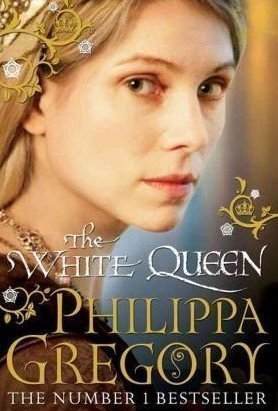Search

Henry VI Part Two
Stanley W. Wells, William Shakespeare and Michael Taylor
Book
The second play in Shakespeare's tetralogy dealing with the Hundred Years War and the Wars of the...

The Little Wonder: The Remarkable History of Wisden
Book
John Wisden, at his peak known as 'The Little Wonder', was a key member of the England cricket team...

The Traitor's Son
Book
Caught between a king and a kingmaker, young Richard Plantagenet knows he’ll have to choose... ...
Medieval Historical Fiction Richard III Wars of the Roses House of York
Deborah (162 KP) rated The Scandalous Duchess in Books
Dec 21, 2018
I have to admit that I do enjoy Anne O'Brien as a writer of historical fiction. Maybe it's not great literature, but it's still an enjoyable ready and she actually makes a first person narrative come off, whereas with some other authors it sounds unnatural or is handled clumsily.
O'Brien's latest offering gives us the tale of Katherine de Swynford (nee de Roet), famous (or perhaps infamous!) as the mistress and later wife of John of Gaunt, Duke of Lancaster (and if you didn't know that he marries her, I think the title might give it away, so I don't think it's a spoiler!). There actually isn't all that much known about Katherine herself, which may seem surprising. I'm sure there may be other novels about her, but by far the best known is Anya Seton's 'Katherine' which might well give another author pause when looking to cover the same ground. The fact that so little is really known about her life does give an author a fair bit of freedom. It must be fairly obvious that there is a love story in there - she was his mistress for many years and then he chose to marry her, which I doubt anyone would have expected.
The novel's subtitle give it as 'the forbidden affair that started the Tudors' - who of course were descended from the legitimated Beaufort line.... but then again Joan was also the maternal grandmother of Edward IV and Richard III! The benefit of hindsight can show us clearly how a seemingly small decision, such as Katherine's decision to acquiesce in becoming John of Gaunt's mistress, can have such a huge impact - namely being a large factor in the Wars of the Roses!
I found this a well written and entertaining novel and I do enjoy my historical fiction! If you've read O'Brien before, I think you'll like this and if not I would recommend giving her a try. I find her writing far superior to the much touted Philippa Gregory.
O'Brien's latest offering gives us the tale of Katherine de Swynford (nee de Roet), famous (or perhaps infamous!) as the mistress and later wife of John of Gaunt, Duke of Lancaster (and if you didn't know that he marries her, I think the title might give it away, so I don't think it's a spoiler!). There actually isn't all that much known about Katherine herself, which may seem surprising. I'm sure there may be other novels about her, but by far the best known is Anya Seton's 'Katherine' which might well give another author pause when looking to cover the same ground. The fact that so little is really known about her life does give an author a fair bit of freedom. It must be fairly obvious that there is a love story in there - she was his mistress for many years and then he chose to marry her, which I doubt anyone would have expected.
The novel's subtitle give it as 'the forbidden affair that started the Tudors' - who of course were descended from the legitimated Beaufort line.... but then again Joan was also the maternal grandmother of Edward IV and Richard III! The benefit of hindsight can show us clearly how a seemingly small decision, such as Katherine's decision to acquiesce in becoming John of Gaunt's mistress, can have such a huge impact - namely being a large factor in the Wars of the Roses!
I found this a well written and entertaining novel and I do enjoy my historical fiction! If you've read O'Brien before, I think you'll like this and if not I would recommend giving her a try. I find her writing far superior to the much touted Philippa Gregory.
Deborah (162 KP) rated The White Queen (The Plantagenet and Tudor Novels, #2) in Books
Dec 19, 2018
Not quite sure why I decided to read this as the only other book I've read by Gregory was The Other Boleyn Girl, which I thought was pretty dreadful. I suppose I find it difficult to keep away from anything connected with The Wars of the Roses; I certainly found that I'd read almost every book listed in the bibliography and could have recommended a few more that might have been beneficial for the author to have perused.....
While not the worst book I've ever read I know I won't be reading this again and as to The Red Queen - well, I'd probably want to strangle Margaret Beaufort before the first chapter was out, so let's leave it at that shall we.
I do read a lot of historical novels and in general I find that it is much harder for a novel to work well when it is written in the first person, as this is. With a single viewpoint you are restricting yourself and that shows here at several points where the author has to break out of the Elizabeth Woodville narrative to give us a chunk of what is going on elsewhere. I've never found EW a particularly sympathetic historical character and I'm not sure she comes across that well here, either. Certainly in the latter half of the book it's difficult to see what motivation Gregory is ascribing to her.
The family of EW's mother did believe themselves descended from a water goddess and it was not unusual for powerful women to be accused of witchcraft, to discredit either them or their husbands (see Eleanor Cobham). I daresay that mixing of love potions and use of figures and all that sort of thing would have gone on, but the whistling up of storms was going just a bit too far for me. I also thought that the Foreshadowing element of the story was a bit overdone - although that may be because I know too much about the period!
There were also a number of glaring errors and oddities which should have been picked up somewhere down the line. Looks like the favourite one is the anachronistic use of the word 'numpty'! In other places George of Clarence is described as a duke one moment and his wife, Isabel as a countess the next (she would have had that as a subsidiary title, but she was the duchess of Clarence!), an execution was said to have taken place by the axe when the person in question is known to have been hanged, the Parhelion (three suns)are said to have been at Towton when it was in fact at Mortimer's Cross (Towton took place in a snowstorm - I doubt they could see one sun, let alone three!) and Gregory needed to study her history of Barnet a bit more closely as she had her battle lines completely mixed up!
Obviously there are some big gaps in our knowledge, which is grist to the fiction writers mill! I thought her Princes in the Tower solution was interesting and glad to see that she acknowledged that Richard III would have had little to gain from their deaths at this point. Not sure if Lambert Simnel is 'explained' in one of the other books in this series, as EW's part is certainly interesting. Also interesting that although the name of Eleanor Butler is mentioned early on and the anullment of the marriage on grounds of Edward's previous marriage come into play later, the two are never linked by the author and she chooses to offer no comment on this piece of the puzzle.
While not the worst book I've ever read I know I won't be reading this again and as to The Red Queen - well, I'd probably want to strangle Margaret Beaufort before the first chapter was out, so let's leave it at that shall we.
I do read a lot of historical novels and in general I find that it is much harder for a novel to work well when it is written in the first person, as this is. With a single viewpoint you are restricting yourself and that shows here at several points where the author has to break out of the Elizabeth Woodville narrative to give us a chunk of what is going on elsewhere. I've never found EW a particularly sympathetic historical character and I'm not sure she comes across that well here, either. Certainly in the latter half of the book it's difficult to see what motivation Gregory is ascribing to her.
The family of EW's mother did believe themselves descended from a water goddess and it was not unusual for powerful women to be accused of witchcraft, to discredit either them or their husbands (see Eleanor Cobham). I daresay that mixing of love potions and use of figures and all that sort of thing would have gone on, but the whistling up of storms was going just a bit too far for me. I also thought that the Foreshadowing element of the story was a bit overdone - although that may be because I know too much about the period!
There were also a number of glaring errors and oddities which should have been picked up somewhere down the line. Looks like the favourite one is the anachronistic use of the word 'numpty'! In other places George of Clarence is described as a duke one moment and his wife, Isabel as a countess the next (she would have had that as a subsidiary title, but she was the duchess of Clarence!), an execution was said to have taken place by the axe when the person in question is known to have been hanged, the Parhelion (three suns)are said to have been at Towton when it was in fact at Mortimer's Cross (Towton took place in a snowstorm - I doubt they could see one sun, let alone three!) and Gregory needed to study her history of Barnet a bit more closely as she had her battle lines completely mixed up!
Obviously there are some big gaps in our knowledge, which is grist to the fiction writers mill! I thought her Princes in the Tower solution was interesting and glad to see that she acknowledged that Richard III would have had little to gain from their deaths at this point. Not sure if Lambert Simnel is 'explained' in one of the other books in this series, as EW's part is certainly interesting. Also interesting that although the name of Eleanor Butler is mentioned early on and the anullment of the marriage on grounds of Edward's previous marriage come into play later, the two are never linked by the author and she chooses to offer no comment on this piece of the puzzle.

